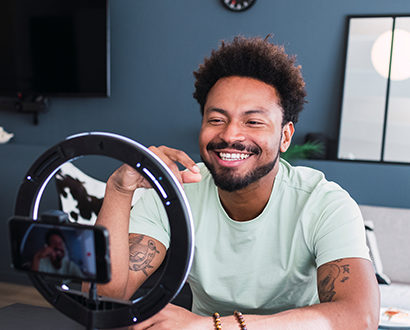Airport retail operators have arguably one of the most difficult marketing jobs out there. Not only do they have to juggle the demands of multiple stakeholders worldwide, but they also have to craft campaigns and experiences that meet the needs of billions of global travellers.
Gone are the days when the only shops in an airport were the duty-free outlet, a WHSmith and a Burger King. Now airports are full of bars, restaurants and other activities to occupy travellers' time and draw attention away from the shopping experience. Retailers and brands have to work harder than ever to cut through.
Add to that the difficulty of trying to entice disgruntled passengers who might be suffering from delays or flight cancellations, and you can see how complex this marketing challenge is.
A compelling in-store experience is critical to win attention in this crowded space. The high street is already evolving to become more experience-driven, but airports are unique. Brands and retailers are gifted an utterly captive audience - their job is to inspire that audience to shop.
Technology is a great enabler, and it's allowing forward-thinking travel retailers to explore all sorts of new and exciting activations with their brand partners. For instance, duty-free retailer Lotte ran an experiential shop-in-shop in Melbourne Airport for Aperol, a two-month affair to celebrate the Italian liqueur brand's long-term partnership with the Australian Open. Screens throughout the space recreated the impression of a sunset to engage customers, who were offered enticing promotions and gifts with purchases to encourage sales.
Sports and cultural events are a great source of inspiration for retail experiences, especially when targeting visiting travellers. Leveraging tech can elevate those experiences to the next level, whether using robot arms to mix customers' cocktails or inviting them to explore a relevant destination through virtual reality (VR). These points of interest are what make for a stimulating and engaging experience.
Experiences are particularly good at attracting millennial and Gen Z travellers, who are far more demanding in what they expect from retailers. These generations lack the emotional connection with airport shopping and duty-free that older generations often have. The airport used to be the only place where consumers could access famous brands at low prices; now, with the rise of online shopping and reselling, these brands are accessible from within people's homes.
So, travel retailers and brands must find new ways to make the airport shopping experience memorable. Whether it's experimenting with spatial computing, gaming and the metaverse, or AR, VR and mixed reality tools, these technological advancements all bring opportunities worth considering. We need to give travellers airport-exclusive experiences they won't want to miss.
Elevating convenience through tech
That said, there are two main audience types in airports. Infrequent travellers who fly once or twice a year are usually the audience most interested in having unique airport experiences. But retailers must remember the needs of the second audience, too: frequent flyers. Retail activations will attract these travellers, but they often just want a seamless airport experience that allows them to do their duty-free shopping with the least friction.
There are multiple technologies retailers can exploit to give that audience the frictionless experience they want. Some, like SimplyFresh, are rolling out Amazon's Just Walk Out technology in their airport stores, allowing customers to buy items without checking out. They pick up their items and walk out, with their debit or credit card automatically charged for the purchase.
Online click-and-collect options can also be a convenient shopping avenue for frequent travellers, while QR codes help to alleviate the stress of ordering food and drink in a busy bar or restaurant. Innovations around AI and chatbots are also proving effective - beauty retailer Sephora, for example, has launched an AI chatbot that can instantly give customers a bespoke consultation, removing the need to wait for a staff member in-store.
Suppose mixed reality technologies like the Apple Vision Pro become increasingly commonplace. In that case, travel retailers might consider making their in-store communications and activations visible only in the digital world, so all customers can have the shopping experience they want.
Ultimately, the future winners of travel retail will be those who can bring the magic back to airport shopping. Leveraging technology to provide innovative and engaging experiences is just one part of that mission; engaging content, targeted product lines, and inspiring global campaigns are all critical, too.
It's a complex challenge, but the payoff will be huge for the victors. No wonder, then, that more and more brands are investing in the travel retail space.





.png)
